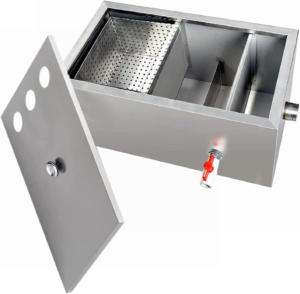Car accidents can lead to significant financial burdens, including medical bills, vehicle repair or replacement costs, loss of income, and ongoing pain and suffering. A lawyer can help you file claims for these expenses through the at-fault driver’s bodily injury liability insurance or your uninsured motorist coverage.
Experienced lawyers know how to maximize settlements and can handle negotiations with insurance companies that challenge or diminish your valid injury claims. Contact Auto Accident Attorney Duluth GA now!

Medical records are a key part of any car accident case. In an accident case, they can help victims prove their injuries and damages to the insurance company or other liable party. They can also provide valuable information about what caused an accident.
The most important function of medical records is to show a judge or jury the nature and severity of a victim’s injuries from a medical professional’s point of view. This evidence is difficult to dispute and can make or break a personal injury case. In addition, the medical paperwork can help to put a dollar amount on the cost of treatment and recovery.
Providing your attorney with your car accident medical records is a crucial step in building your claim. These documents can be used to prove your injuries and damages, including current and future medical expenses, lost wages, and pain and suffering. They can also be used to show that the other driver was negligent in causing the accident.
Medical records can be obtained from your primary care physician, hospitals, diagnostic imaging centers, and therapy facilities. They can include medical bills, progress notes, test results, and treatment plans. Other useful documentation can include immunization records, medical consent and authorization forms, correspondence between healthcare professionals, and even photographs of your injuries.
The other driver’s insurance company will want to get your medical records for two main reasons. First, they will try to discredit your injuries and damages by arguing that they were caused by a preexisting condition or unrelated to the accident. Secondly, they will use the records to justify their lowball offers.
Efficient management of your car accident medical records can help to maximize the compensation that you receive. However, many victims struggle to manage their own medical records due to the many healthcare providers they visit and the decentralized records systems that most facilities use. In addition, privacy laws can prevent patients from accessing their own medical records easily. This can lead to delays in legal proceedings and a decreased chance of reaching a successful resolution to the case.
Police Reports
A police report can be a critical piece of evidence for your car accident claim. It contains important information that can help establish liability, including statements from witnesses and the officer’s observations of the accident scene. In addition, it often includes a diagram or photo of the accident scene that can help clarify the sequence of events.
A police officer will complete a standard form, known as an MV-104, after any traffic accident in New York City. This document will contain a lot of essential information about the crash, including contact information for all involved parties, insurance details for each driver, and a description of the accident based on the officer’s investigation.
In addition, the report will usually include the weather conditions and road conditions at the time of the accident. This can help determine what caused the accident and who is liable for the crash. It will also include any citations issued at the scene.
Finally, the report will contain a list of all injuries sustained in the accident. Pay special attention to Row 14, which lists the physical location of each injury, and Row 15, which lists the type of injuries and their severity. The coding used in these columns is specific to New York State traffic law, and it’s important to understand what these codes mean so that you can correctly interpret the information.
Depending on the situation, the police officer may also include their preliminary assessment of fault for the accident. This is not legally binding, but it can play an important role in the claim process. Insurance companies consider the police officer’s opinion when determining how much they’re willing to pay in a settlement.
If you have a disagreement with the officer’s initial assessment of fault, you or your attorney can submit additional evidence to challenge it. For example, your attorney can interview witnesses and examine video footage to present a more complete picture of the accident’s causes. They can also use medical records and other documents to prove that you have suffered serious injury. In addition, addressing inaccuracies in the police report promptly can ensure that they aren’t used to deny your claim.
Insurance Company
Car accident victims can suffer a wide range of injuries, from minor bruises and lacerations to broken bones, traumatic brain injury, or even death. These injuries require extensive medical treatment that can often cost thousands of dollars. An experienced lawyer can gather information from the accident, give you legal advice, and negotiate with insurance companies to ensure you receive adequate compensation for your medical bills, property damage, lost wages, and other expenses.
In addition to gathering police reports, medical records, and witness statements, an attorney will also conduct a thorough investigation of the crash site. If applicable, they will look for video footage of the incident from nearby surveillance cameras or speak with eyewitnesses. An auto accident attorney may also investigate the background of the driver who caused the crash to determine if they are legally responsible for it.
If the at-fault driver or their insurance company denies fault, it can be difficult to prove liability in court. They might use faulty police reports, discrepancies among witnesses, or any other number of tactics to derail your case. The car accident attorney will know how to counter these arguments and provide evidence that proves the other driver was responsible for the accident.
The insurance company may try to trick you into accepting a low settlement offer. They might call you or send you a letter asking you to make a recorded statement within a certain period of time after the accident. It is important to refuse to talk to them directly, or agree to a recorded statement, and only give them your lawyer’s contact information so that all communications go through them.
Another common trick that insurance companies use is to blame injuries on pre-existing conditions. They might dig through your medical records for years or even decades to find some previous injury they can say was the cause of your new injury. They might hire a radiologist to examine your MRI and claim that the injury looks old and must have been present before the accident.
It’s important to have a skilled New York car accident attorney on your side because insurance representatives are known for being dishonest. An insurance company’s goal is to pay out as little as possible on a claim and they have entire teams of lawyers and adjusters ready to do whatever it takes to achieve that goal. With an experienced attorney on your side, they’ll level the playing field.
Uninsured Motorist
If the at-fault driver does not have insurance or has insufficient coverage to pay for your accident-related expenses, you may be able to recover damages from your own auto insurance through uninsured motorist and underinsured motorist coverage. An attorney can help you evaluate your options, file a claim with the appropriate insurance company, and negotiate with the insurer to get all the compensation you deserve.
An experienced auto accident lawyer will understand how to obtain the necessary documentation to substantiate your uninsured motorist claim. They can also provide you with the names and contact information of potential witnesses who can testify to the events that took place. In some cases, it may be necessary to obtain statements from medical care providers and other experts who can provide deeper insight into your injuries, your long-term prognosis, and the extent of your damages.
The auto accident attorney can also help you collect evidence to prove that the at-fault driver was negligent. For example, they can help you identify any contributing factors that led to the accident, such as poor road conditions or an unsafe road sign. They can also investigate any third parties who could be held liable, such as a business that sold the driver alcohol or the municipality responsible for poorly maintained road signs.
Uninsured motorist claims can be complicated, especially if the at-fault driver fled the scene and cannot be located. An auto accident lawyer can handle all communications with the insurance company and make sure all paperwork is filed within the required timeframe.
Besides medical bills and vehicle repair costs, your UM/UIM policy can cover other types of damages, including pain and suffering. Pain and suffering is a non-economic form of damages that covers physical, emotional, and mental anguish associated with your accident. An attorney can explain the various categories of damages and how to calculate them. They can also help you include other damages that are not easily measurable, such as loss of enjoyment of life or disfigurement. They can also assist you in filing a punitive damage claim against the at-fault party if their reckless or intentional behavior is considered to be a significant cause of your injury.





